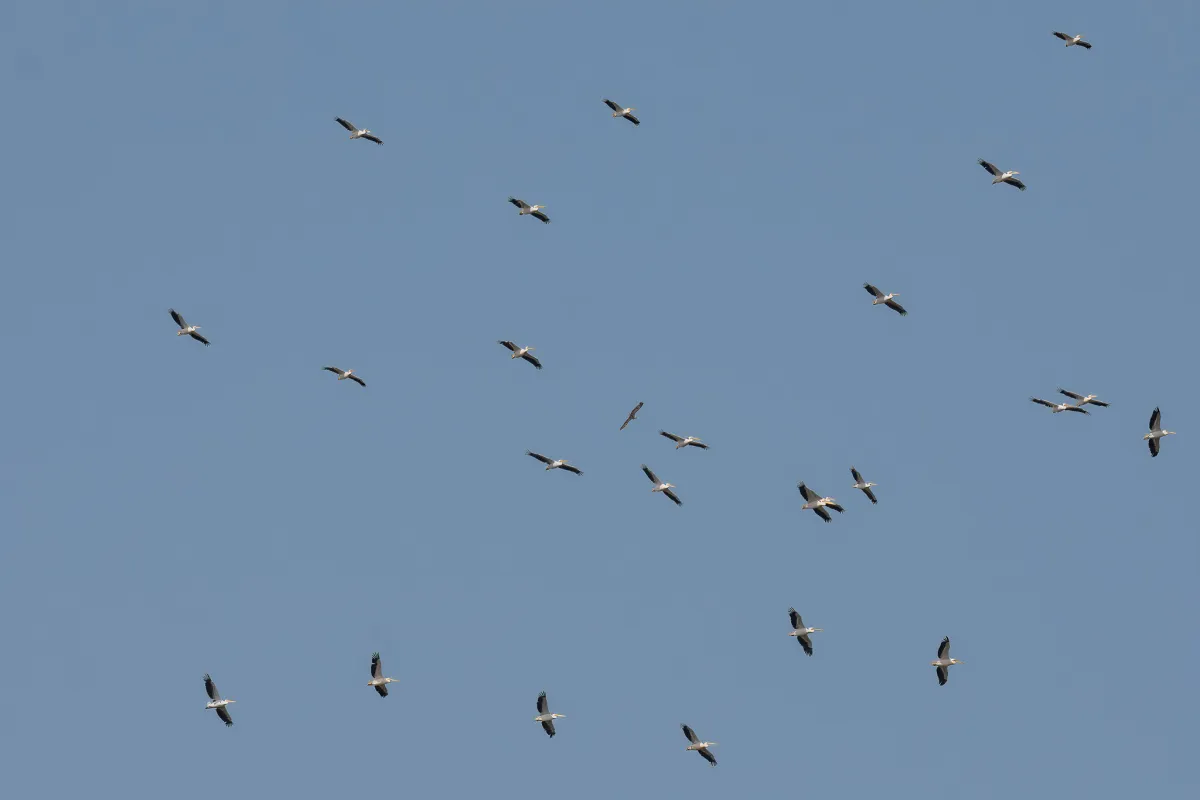The Great White Pelican, Pelecanus onocrotalus, is a magnificent bird that graces the wetlands and lakes of several continents. It is sometimes also known variously as the Eastern White Pelican, Rosy Pelican or just plain and simple White Pelican.

Appearance
The Great White Pelican is certainly big, with a wingspan ranging from 226 to 360 cm (7 ft 5 in to 11 ft 10 in). This makes it one of the largest flying animals on Earth. Its bill is an enormous pink and yellow affair, measuring between 28.9 to 47.1 cm (11.4 to 18.5 in).
I love the way they squish their long necks inline with the body when in flight, very elegant.
The adult male weighs around 9 to 15 kg (20 to 33 lbs), while the female is lighter at 5.4 to 9 kg (12 to 20 lbs). These pelicans have a dull pale-yellow gular pouch, which they use for catching fish.
Not the most gracious of birds when taking off from water, but their webbed feet help them to get the job done without too much fuss.
Habitat and Range
Great White Pelicans breed across southeastern Europe, Asia, and Africa, favouring swamps and shallow lakes. They are highly sociable and often form large flocks, sometimes consisting of a thousand birds! When you see them arriving, and circling, it is a memorable sight.

Their strong legs and webbed feet make them adept at aquatic life, allowing them to propel through water with ease.
Feeding Behaviour
These pelicans are gregarious and often feed in groups. By feeding together, they can “herd” fish into shallower waters, making catching them much easier. Their preferred feeding time is usually in the early morning.
In Europe, these pelicans are partial to common carp.
The pelican’s pouch, incidentally, is simply a scoop. As the pelican pushes its bill underwater, the lower bill bows out, creating a large pouch which fills with water and fish. As the bird lifts its head, the pouch contracts, forcing out the water but keeping the fish. Be pretty pointless otherwise, of course!
Breeding
The breeding season commences in April or May in temperate zones, runs from February to the end of April in India and is essentially all year around in Africa.
Females lay from 1 to 4 eggs in a clutch, although two tends to be the average. Incubation takes 29 to 36 days. The chicks are naked when they hatch but quickly sprout blackish-brown down. The young are cared for by both parents. The young fledge after 65 to 75 days.
Conservation Status
The Great White Pelican is rated as a species of least concern on the IUCN Red List. It is protected under various international agreements, including the Convention on the Conservation of Migratory Species of Wild Animals and the EU Birds Directive.